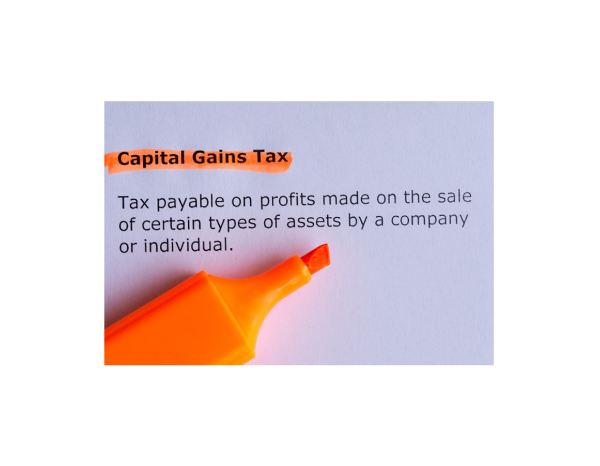
Since April 2020, UK-resident taxpayers have been required to report gains on residential property, and within 30 days of completion, make a payment on account of the tax due. A key feature of the reporting regime is that this 30-day reporting is only required where tax is due. If a gain is covered by the available annual exempt amount, or by losses that have become defined before the completion date (but not later losses - even from the same tax year), no special return is needed. In addition, 30-day reporting is not required where the gain is covered by private residence relief, or is partly covered but the non-exempt amount is otherwise covered by the annual exempt amount, or pre-existing losses etc.
The problems
One issue with these exemptions is that a homeowner may not have sufficient technical knowledge of how private residence relief works to adequately assess the situation, particularly where there have been periods of absence, or there are multiple residences. They may incorrectly assume that the relief applies in full, and therefore not make a report within the 30-day deadline. If this is the case, the disposal may not even be reported to the accountant or tax adviser, meaning mistakes may not be picked up for a considerable time - by which point significant penalties may have accrued.
Periods of absence
Where the seller only has one available residence and has lived in it continuously throughout the period of ownership, relief should apply in full. However, certain periods of absence can count as "deemed occupation" as well.
Where there is a delay in occupation, for example where refurbishment is required, a period of up to two years can still qualify as occupation for the purposes of the relief. However, if the delay lasts longer than two years, none of the period can qualify. This is now a statutory, rather than discretionary, entitlement under government guidance s. 223ZA TCGA 1992.
The final nine months of ownership are always treated as being occupied - as long as the property has been the only or main residence at some point during the period of ownership. However, up until quite recently, this final period exemption was 36 months, and some sellers may not be aware of this significant reduction in time.
Certain other periods of absence also count as deemed occupation if the property was used as the main residence both before and after the absent period. These include:
- periods of up to three years (in total) for any reason;
- periods of absence due to overseas employment where all duties are carried out overseas;
- periods of up to four years whilst working away and the distance from the place of work makes it unrealistic to live in the property, and the employer requires the employee to work away from home.
Someone making a disposal that has been physically absent from the property at any time during the period of ownership should check that the requirements for deemed occupation have been met before assuming that relief will apply in full. HMRC's guidance CG65065 has a useful example that shows how the relief applies where there are multiple absent periods.
Multiple properties
If the seller has multiple properties that are genuinely occupied as a residence for at least some of the period of ownership, they may have elected to nominate which of these should be treated as the main residence for the purposes of the relief and so this should be checked. There is no requirement to nominate the residence which is actually the one occupied most of the time. For example, if a taxpayer purchased a property in the town centre that they occupied for four days a week whilst working and maintained another property in the countryside that they only occupy for three days a week, it is acceptable to nominate the second property as the main residence even though it is occupied less frequently.
There is a two-year time limit, measured from the date the combination of available residences changes, for making a nomination. If no valid nomination is made, HMRC will determine which is the main residence based on the facts pertinent to the situation. The High Court case of Frost v Feltham confirmed that the question of which is the main, or principal, residence cannot be determined by considering the time spent in each one alone. For this reason, it is essential that the seller does not fall into the trap of assuming that the property they have sold will be viewed by HMRC as their main residence for the purposes of the relief. This is an area in which HMRC appears to be taking significant interest.
Letting relief
One further area that could cause problems is the assumption that letting relief will apply to cover part of the gain not covered by private residence relief. However, the operation of lettings relief changed in April 2020 so that it only applies for periods where a landlord shares occupation of the property with their tenants. Previously, it applied to any property let that has ever been the main residence of the seller. The change was a major one in that a disposal made on or after 6 April 2020 takes account of the new rules in full for the whole period of ownership, not just the occupation of the property since the change. Landlords who have moved out of the property and subsequently let it to tenants will no longer qualify. Again, if the seller is not aware of the change, they may wrongly assume that up to £40,000 of the gain is covered by relief.
Summary
Any of these incorrect assumptions can mean that a gain does in fact need to be reported within 30 days of completion.
Next steps
This is a complex area so please get in touch if you have a question. My email is martin.johnson@torgersens.com.
The information provided in this blog is for general informational purposes only and should not be considered professional advice. As far as we are aware, the content is accurate at time of publication. Torgersens assumes no responsibility for errors or omissions in the content or for any actions taken based on the information provided.




.jpg)



